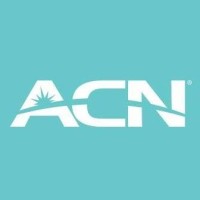Company Cyber Security Posture
NANA
NA Company Details
NA
NA
NA
NA
NA
NA
Scan still pending
NA
NA
Between 200 and 800
This score is AI-generated and less favored by cyber insurers, who prefer the TPRM score.
 NA Global Score
NA Global Score.png)

Company Scoring based on AI Models
| Model Name | Date | Description | Current Score Difference | Score |
|---|---|---|---|---|
| AVERAGE-Industry | 03-12-2025 | This score represents the average cybersecurity rating of companies already scanned within the same industry. It provides a benchmark to compare an individual company's security posture against its industry peers. | N/A | Between 200 and 800 |
Company Cyber Security News & History
| Entity | Type | Severity | Impact | Seen | Url ID | Details | View |
|---|
Company Subsidiaries

NA
Access Data Using Our API

Get company history
.png)
NA Cyber Security News
Marconi PLC G.E.C. 1972 Pension Plan, Stafford, England, hired Merrill...
Marconi PLC G.E.C. 1972 Pension Plan, Stafford, England, hired Merrill Lynch Investment Managers to run an £800 million ($1.14 billion) U.K. ...

NA Similar Companies

ACN
ACN is the leading direct selling telecommunications and essential services provider. ACN Inc. was founded in 1993 by four entrepreneurs and is now operating in North America. ACN offers essential products and services that people use every day, while also offering a powerful business ownership oppo

Deutsche Telekom
Welcome to Deutsche Telekom. As one of the world's most valuable brands, we design innovative solutions and products in the areas of connectivity, networks, digitalization and security. #connectingyourworld At Deutsche Telekom, we believe that each and every one of us has the power to move society

DISH Network
Our adventure began by changing the way people watched TV, bringing DISH to where big cable wouldn’t: rural America. Since then, we have reinvented ourselves and our own industry with Sling TV to give millions of consumers more choice in entertainment. Today, we’ve officially entered the consumer wi

Politicnico di Torino
The Polytechnic University of Turin (Italian: Politecnico di Torino, POLITO) is an engineering university based in Turin, northern Italy. Established in 1859, Politecnico di Torino is Italy’s oldest Technical University. It is also widely regarded as one of the best universities worldwide in the fie

A1 Telekom Austria Group
WE ARE EMPOWERING DIGITAL LIFE We don't know how the world will look like in 2050, but we know that A1 Telekom Austria Group is geared up for current and future demands. We are a leading provider of digital services and communications solutions in Central and Eastern Europe, offering a state-of-th

Spectrum
Charter Communications, Inc. (NASDAQ: CHTR) is a leading broadband connectivity company and cable operator with services available to more than 57 million homes and businesses in 41 states through its Spectrum brand. Over an advanced communications network, the company offers a full range of state-o

Frequently Asked Questions
Explore insights on cybersecurity incidents, risk posture, and Rankiteo's assessments.
NA CyberSecurity History Information
How many cyber incidents has NA faced?
Total Incidents: According to Rankiteo, NA has faced 0 incidents in the past.
What types of cybersecurity incidents have occurred at NA?
Incident Types: The types of cybersecurity incidents that have occurred include .
Additional Questions
What Do We Measure?
















Every week, Rankiteo analyzes billions of signals to give organizations a sharper, faster view of emerging risks. With deeper, more actionable intelligence at their fingertips, security teams can outpace threat actors, respond instantly to Zero-Day attacks, and dramatically shrink their risk exposure window.
These are some of the factors we use to calculate the overall score:
Identify exposed access points, detect misconfigured SSL certificates, and uncover vulnerabilities across the network infrastructure.
Gain visibility into the software components used within an organization to detect vulnerabilities, manage risk, and ensure supply chain security.
Monitor and manage all IT assets and their configurations to ensure accurate, real-time visibility across the company's technology environment.
Leverage real-time insights on active threats, malware campaigns, and emerging vulnerabilities to proactively defend against evolving cyberattacks.




